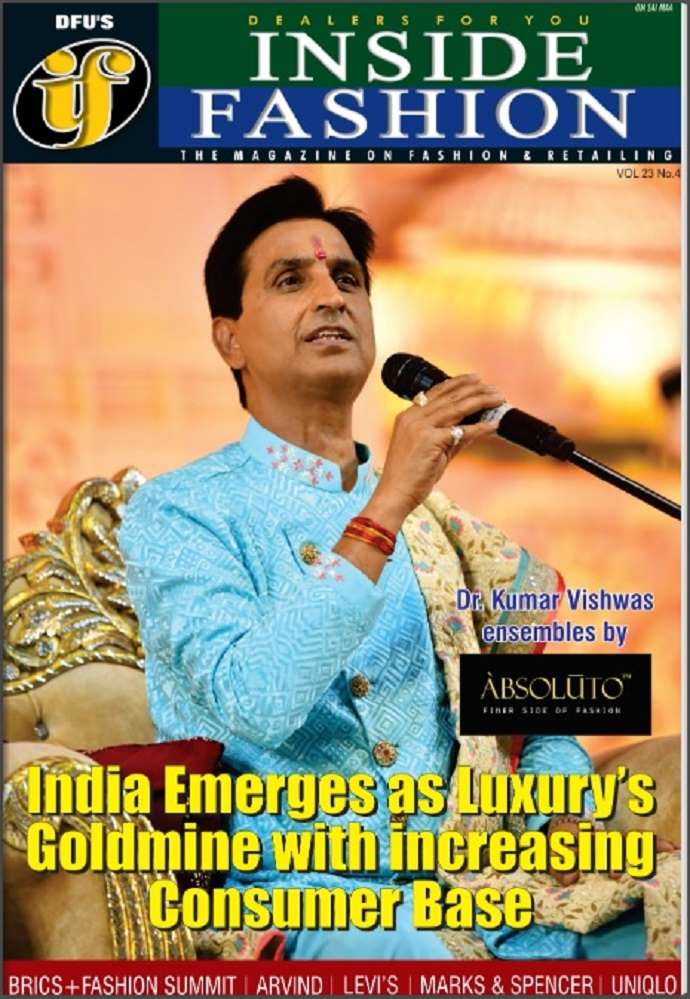28 October 2025, Mumbai
India’s apparel market has stitched a new success story this Diwali. A comprehensive report by the Confederation of All India Traders (CAIT) Research and Trade Development Society reveals, the ready-made garments and textile sector generated a historic Rs 59,400 crore in festive sales, marking its strongest contribution yet to India’s non-corporate retail economy.
The overall Diwali trade touched an unprecedented Rs 6.05 lakh crore (including goods and services), pushed up largely by small and medium-sized retailers. Of this, the non-corporate goods segment, valued at Rs 5.40 lakh crore, saw the apparel sector emerge as one of the top five contributors, accounting for 11 per cent of total goods sold.
Table: Garment sales take the lead
|
Apparel sector |
Percentage share of total goods sales |
Estimated value (based on Rs 5.40 lakh cr total goods sales) |
|
Ready-made Garments |
7% |
Rs 37,800 cr |
|
Textiles and Fabrics |
4% |
Rs 21,600 cr |
|
Total Apparel & Textile Trade |
11% |
Rs 59,400 cr |
Ready-made triumphs over tailored
CAIT’s nationwide survey reveals a clear evolution in festive buying behaviour. Indian consumers increasingly prefer ready-made apparel to traditional fabric purchases, a shift that gets a boost from convenience, rapid fashion cycles, and digital retail penetration.
While textiles and fabrics still hold a cultural foothold, particularly in regional and wedding markets, the ready-made segment’s performance underscores how instant fashion gratification has taken root. The average household’s preference for affordable, off-the-shelf festive wear was amplified by the growing popularity of value retail formats like Zudio, Reliance Trends, and regional chains such as V2 Retail.
How GST shapes fashion choices
Industry bodies such as the Clothing Manufacturers Association of India (CMAI) attribute the segment’s split performance to the pricing architecture under India’s Goods and Services Tax (GST) regime, now a defining factor in festive fashion spending.
Mass market resilience (below Rs 2,500): Garments priced below Rs 2,500, taxed at a lower GST rate of 5 per cent drove the bulk of the 7 per cent apparel market contribution. This mass-market segment, comprising kurtas, casual wear, and locally made festive attire, benefited from price-sensitive buyers embracing ‘Vocal for Local’ options. The affordability advantage has strengthened this bracket as the growth engine of India’s apparel economy.
High-value headwinds (above Rs 2,500): In contrast, sales of high-end ethnic and designer wear priced above Rs 2,500 were subdued due to the steep 18 per cent GST rate. Retailers report that premium consumers either deferred purchases or traded down to more affordable alternatives. The GST structure, thus, continues to act as a price wall for aspirational buyers and small premium brands.
The ethnic wear dilemma
The price gap between textiles and finished garments has created a market distortion. For instance, purchasing high-quality fabric (taxed at 5 per cent) and having it tailored remains cheaper than buying a comparable ready-made ensemble that crosses the Rs 2,500 threshold and attracts 18 per cent GST. This fiscal discrepancy has led to dual consumer behaviour: downtrading among middle-income buyers, who prioritise affordability; sustained demand for fabric sales in semi-urban and Tier-II markets, where tailoring remains a local enterprise. As a result, while ready-made garments dominated overall volume, textiles and fabrics managed to hold ground by capturing demand for customised, tax-efficient purchases.
SMEs and local retailers, the hidden growth engines
Beyond metros, the CAIT report underscores the important role of small and medium traders many of whom operate hybrid models of ready-made and fabric retail. In states like Tamil Nadu, Gujarat, and UP, locally manufactured festive wear and powerloom textiles were important revenue drivers. Retail analysts note that these enterprises have benefited from: Stable cotton prices in Q3 FY26; improved liquidity and rural sentiment; digital visibility through WhatsApp and social commerce networks. Collectively, SMEs have transformed India’s festive economy into a decentralised growth story one powered by domestic supply chains rather than large corporate retail.
According to CAIT, India’s Consumer Confidence Index (CCI) for October 2025 stood at 8.4/10, reflecting strong optimism in household spending. Stable inflation, early festive bonuses, and greater credit access via UPI-linked BNPL (Buy Now, Pay Later) services contributed to the strong apparel turnout. Moreover, the Make in India narrative and social media-driven fashion trends have created a sentiment bridge between affordability and aspiration enabling consumers to celebrate without budgetary strain.
Wedding season to sustain tailwinds
With the wedding season set to begin in November, traders anticipate another surge in apparel and jewellery sales. CAIT projects a potential Rs 3-4 lakh crore in additional retail activity through the first quarter of 2026, led by ethnic wear, gold, and occasion-based accessories. Retail strategists expect sustained demand for semi-premium ethnic wear under Rs 2,500. They also foresee a revival of textile demand in states with strong tailoring ecosystems and an expansion of omni-channel presence by regional garment manufacturers. If trends persist, FY26 could close as a landmark year for India’s domestic apparel economy, one defined not by high-end luxury, but by value-driven festive vibrancy.
The loom of local prosperity
The bootmline is India’s Rs 59,400-crore apparel performance this Diwali reflects more than seasonal exuberance it captures the resilience of its local retail fabric. While tax structures continue to influence consumption patterns, the fundamental takeaway is clear: India’s fashion economy is increasingly powered by affordability, accessibility, and indigenous enterprise. As a CAIT official summed up, “Every stitched kurta and woven sari this Diwali tells a larger story, of India’s traders, tailors, and textile workers weaving their way into the country’s economic heartbeat.”
Latest Publications
























